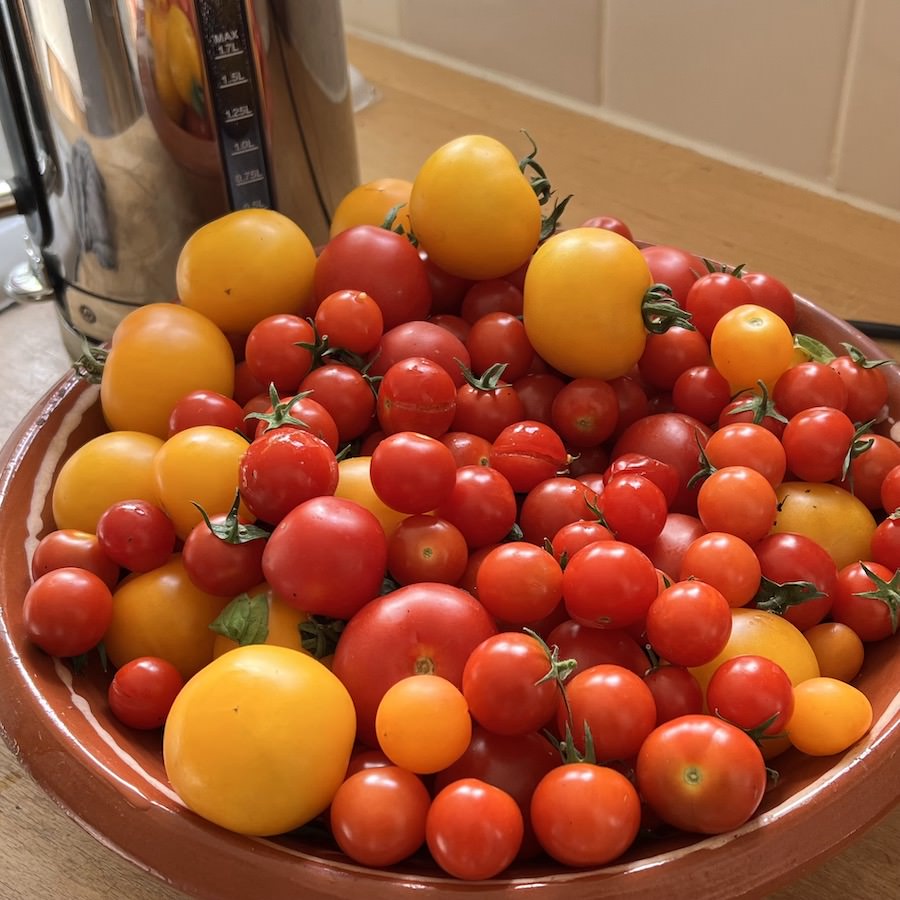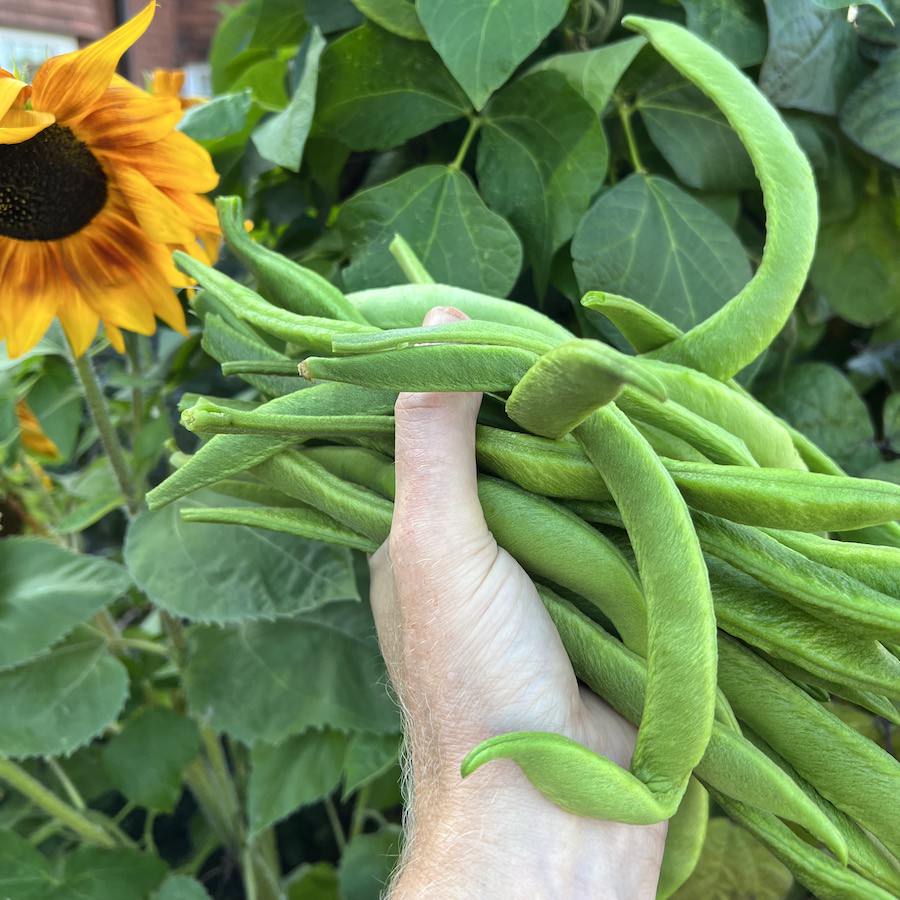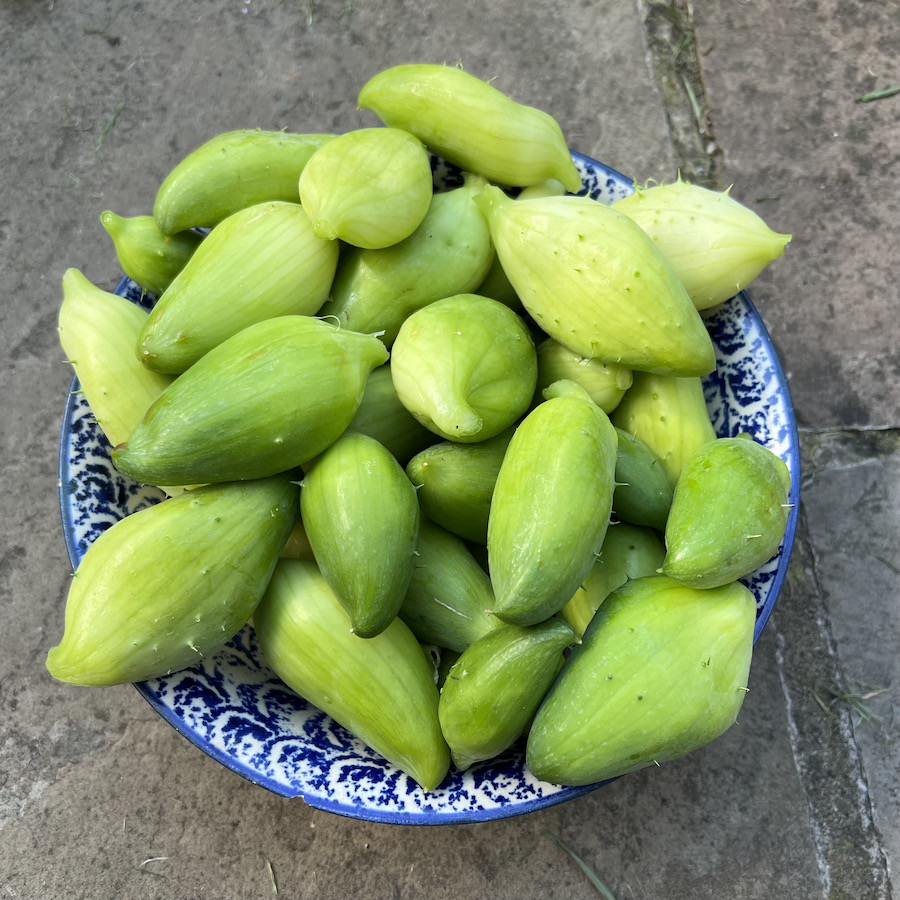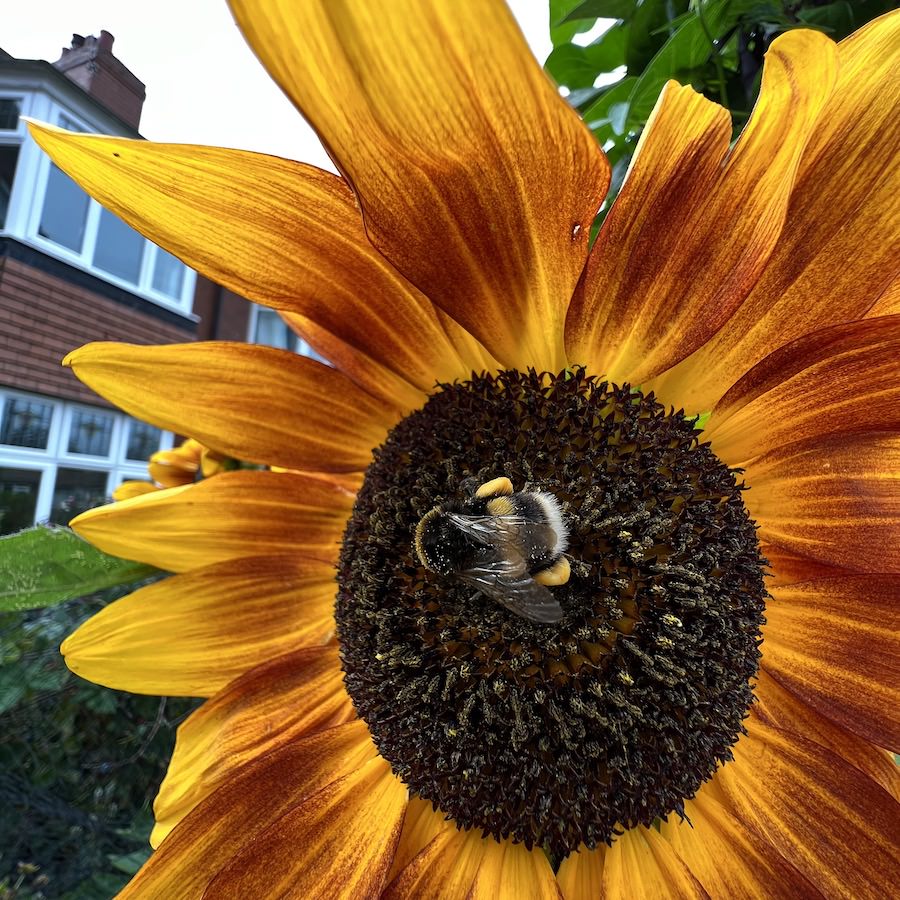Creating your ideal edible (and beautiful) garden in containers

What makes the ideal edible garden in containers? It's different for each of us, of course, and usually takes trial and error to discover. One good way to evolve a container garden is to try a few different plants in your container garden each year. This will help you discover what you love to grow most. Trying new things and experimenting is also good for learning and, in my experience, all part of the fun. The end of the growing season is a good time to look back on the year and reflect on what you’ve enjoyed growing most over the year. And which plants have NOT given you so much pleasure. When you don’t have a lot of space, you want every plant needs to feel really worthwhile in some way. It might be delicious to eat, highly productive, hard to buy, beautiful, loved by bees or simply fun or a novelty to grow. When a plant doesn’t tick one (or ideally two or more) of these boxes, I will often replace it with something else. This also creates a nice opportunity to swap or give away plants or seeds to others.
My learning from the year
Below I share my experience on what we've found works well in our container garden, and how I want to evolve it next year. I’m lucky to have a relatively large ‘small’ space so I can fit a lot in. The downside of this is that it’s easy to get carried away and to collect more pots than it is easy to look after :). But that’s a subject for another day. Your space and what you want to grow will, of course, be different to mine. Even if you are just starting out and only have a few pots, thinking about what you've enjoyed in your container garden and what you want to grow next year is often helpful. And it's nice to dream about future possibilities as the days shorten. Do share what you enjoy growing and what you want to grow next year in the comments at the bottom of the page. The plants we find are good choices for our container garden seem to fall into these four rough groups:
1. The ‘Essential’ crops
These are the plants we love. We never seem to tire of them and we can eat as much as we grow. These include tomatoes, chillies, French beans, blueberries, raspberries, apples, salad leaves (including rocket and pea shoots), courgettes/ zucchini (it’s harder to grow too many courgettes in containers than in the ground) and spinach. Also a few herbs, particularly parsley, basil, mint, oregano and coriander. (Maybe I should also include rosemary, sage, thyme and bay here. We eat them in smaller amounts but we love them and they are so easy and low maintenance to grow.)
Plan for next year
I know all these 'essentials' will be eaten and enjoyed so the plan is to grow more of them where ever space permits! In particular, I need to work out how to grow more coriander, parsley and spinach, as we didn't have a regular enough supply this year. I also grew two courgettes / zucchini and planted both at the same time. Next year I will stagger them so that we have a supply for longer. (I find courgettes tend to have a shorter fruiting period in containers than in the ground).
 However many tomatoes we grow, we find we eat them. Any surplus I make into tomato sauce and freeze for a mid winter treat.
However many tomatoes we grow, we find we eat them. Any surplus I make into tomato sauce and freeze for a mid winter treat.
2. The ‘Nice to Have' Crops
These are the plants that we like to eat - but where the quantity we want is more limited. For example, we really like runner beans, Jerusalem artichokes, chard, and sorrel. But not every day! And there are herbs like garlic chives, tarragon, Society garlic and Scots lovage that we really enjoy but don’t eat that often.
Plan for next year:
The secret here, I find, is to keep learning about what the right amount to grow is. For example, I now know that one supermarket crate of runner beans will produce 5 - 10kg of beans - and this is quite enough for our needs. (I used to grow far too many). On the other hand, I haven’t got it right with herbs. When I divide or propagate herbs, I often hang on to some extras in case one dies. So I now have accumulated five or six pots of mint, three society garlic and two Scots Lovage plants. This is more than we need, takes up space, and creates more work. Next year I will offer surplus herbs to experienced growers who live near me. The idea being that if mine dies, I hope I might get a cutting or a division back :)
 Runner beans are really tasty, particularly when young and tender. But we do find that we get a bit bored of them after several meals :)
Runner beans are really tasty, particularly when young and tender. But we do find that we get a bit bored of them after several meals :)
3. The fun experiments
For some of us, part of the fun of growing our own food is the opportunity to try unusual crops and varieties you can’t get in the shops. Indeed, there is a bit of a vogue in some places for growing the more ‘exotic’ crops like mouse melons and achocha. I don’t want to discourage this, the experience of trying something new is good and usually interesting, whatever the result. And you might discover some things that you love. Japanese wineberries, Chilean guavas and Scots lovage have become very popular with us, for example. But it’s worth bearing in mind that a lot of the unusual crops aren’t universally popular in the kitchen. For example, we’ve tried and quite enjoyed eating tomatillos, oca, achocha and Vietnamese coriander. But not enough to grow them again on a regular basis. Many others can share similar experiences. As well as unusual crops, there are also the heritage varieties of more traditional veg, fruits and herbs. These are well worth exploring. There are some absolutely fantastic chilli, tomato, French bean, pea and lettuce varieties out there. Do try them. Some of them may make it into your ‘essentials’ list.
Plan for next year.
I will look for a few new (to me) unusual crops to grow. Sweet cicely herb and Egyptian walking onions are two that are currently under consideration. I will also have a break from growing all those the unusual crops like achocha and tomatillo that we don’t love to eat. I am also on the hunt for some more heritage varieties of traditional vegetables, particularly peas and French beans.

Achocha is a vigorous climber, productive and fun to grow. The fruits taste a bit like a cross between a pepper and a cucumber. We like them - but not enough to make space to grow them every year.
4. Plants for beauty, scent and wildlife
I used to be quite sniffy about non-edible plants. But my outlook has now changed. Increasingly, I want my front yard to be colourful, beautiful and to support wildlife - as well providing us lots of food to eat. I feel it’s important that it's as attractive as I can make it, particularly as it is in public view. Bright, non edible flowers like cosmos and verbena bonariensis really lift it. And it makes so much more sense (financially and environmentally) to pick a bunch of cut flowers from the front yard, rather than buying imported ones. And I want to support wildlife as much as I can - for the wider ecosystem but also for our own enjoyment. We get a lot of pleasure from watching the bees, hoverflies, and birds that visit our container garden.
Plan for next year.
I want to keep growing more flowers for beauty and to support insects. I like cosmos because it can produce a huge shower of flowers and add so much colour. But it's also prone to grow large and bushy and flower very late or not at all, particularly if it is too well looked after (it likes a bit of stress to flower). I had several non flowering cosmos this year (grown in pots alongside my fruit trees). So I'm going to only grow cosmos in low fertile compost in small pots next year. I will grow sunflowers, verbena bonariensis, fennel, and salavias again as well some spring bulbs - as all these were a big success. I'm also on the hunt for other flowers that pollinating insects love. On my radar is Agastache (I've seen bees crawling all over it), and pulmonaria, a pretty blue flower.
 Every time we went into the front yard there seemed to be at least one bee wallowing round this sunflower. It was lovely to watch.
Every time we went into the front yard there seemed to be at least one bee wallowing round this sunflower. It was lovely to watch.
Making YOUR plan
These are four (slightly random) groups that I am using to help think about what to grow next year. You can divide them up in any way you like really. But I think the process of thinking about what you enjoy growing and why you enjoy growing it can be helpful. I also urge you not to be afraid of giving away or swapping any plants that you aren't enjoying growing. Each plant in a container requires a fair bit of looking after, and, in a small space, you want to slowly collect up those that give you the most pleasure, for whatever reason.
Your turn - what do you want out of your garden?
What are your ‘Essentials’ to grow every year in your garden? Have you discovered any unusual crops that you love to eat? Or have you tried some that weren't special enough to make you want to grow them again? And do you grow non-edible flowers for beauty and wildlife or do you prefer to focus just on edibles? I'd love to hear in the comments below.

10 comments
Leave a comment